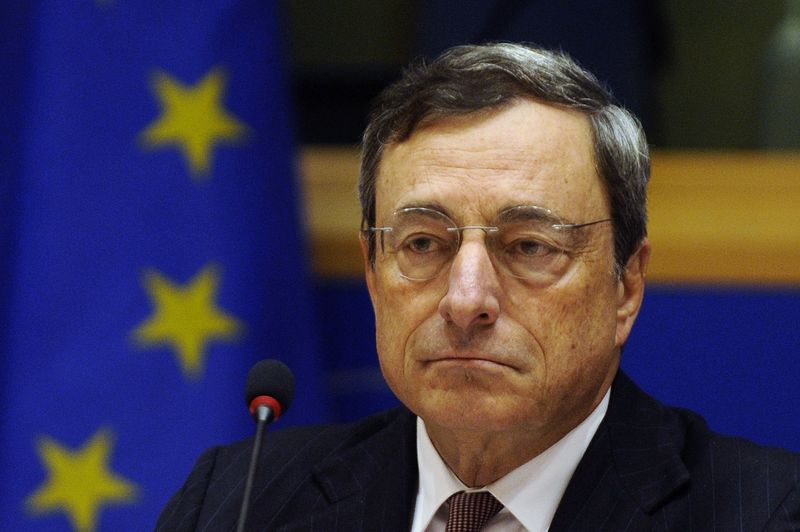Investing.com – As markets turned their eyes towards the European Central Bank’s (ECB) monetary policy decision on Thursday, the uptick in euro zone inflation data released on Tuesday seemed to reinforce the idea that the central bank will announce no new measures as it updates its economic forecasts.
The ECB is widely expected to remain in wait-and-see mode on Thursday with no changes to interest rates or any announcement of further stimulus.
Indeed, ECB president Mario Draghi was expected to give details on the start of the corporate bond buying program (CSPP) which was announced to formally start in June along with a second round of targeted long-term refinancing operations (TLTRO II) designed to provide funds to banks with requirement that they be used to finance loans.
With these programs only just beginning, Draghi would likely signal that the effects need time to feed through to the real economy and would refrain from taking more measures.
Morgan Stanley referenced these programs and admitted that it might make their forecast for additional easing already in the third quarter to be “a bit too early”.
“The (ECB) might take until late 2016 or early 2017 to announce further monetary policy action,” these experts added.
In fact, a recent Bloomberg survey saw about 67% of economists expecting more easing, while just over half of them felt the announcement would come in September.
However, a Reuters poll published last week showed that a slight majority of economists doubt the ECB will ease monetary policy again this year.
In that regard, market participants could only hope to see how the formal start of the CSPP had begun. Central bank sources had leaked that the ECB would begin with small purchases of corporate debt and slowly increase the monthly acquisitions to €5 to €10 billion ($5.6 to $11.2 billion).
Inflation forecast update in the spotlight
Even before euro zone consumer price data (CPI) for May was released on Tuesday and showed a slight uptick in both headline and core inflation, economists widely expected the ECB to increase their inflation forecast for the first time since June 2015.
The ECB’s previous projections, published in March, predicted that inflation would average 0.1% in 2016, 1.3% in 2017 and 1.6% in 2018.
Most economists expect the ECB to increase its estimate for this year due to higher oil and food prices, but the major factor looking forward would be the continued lack of wage pressure.
Euro area negotiated wages rose a nominal 1.4% in the first quarter, the slowest pace since the single currency was created over a decade ago.
The unemployment rate for the euro zone did hold at a five-year low in April, according to official data released on Tuesday. However, the 10.2% reading is twice that registered in other advanced economies such as the U.S. or U.K.
Still, this was down from the 11% registered a year ago the single currency bloc and, even though the jobless rate remained unchanged, the total count of unemployed workers did drop by 63,000.
Nonetheless, it remains to be seen if the continual slow improvement in euro zone labor markets will be sufficient to raise wages and thus push inflation back towards the ECB’s 2% target.
Growth outlook may be nudged higher
Along with the slow improvement in employment, Monday saw business and consumer optimism in the euro area hit a four-month high in May, which could give the ECB cause to also increase its growth forecasts.
However, IHS Global Insight warned that it remained to be seen if these improvements would continue or falter.
"There are certainly a number of downside risks, including still appreciable global economic uncertainties, the possibility of the U.K. voting to leave the European Union (on June 23), and the danger of further terrorist attacks in Europe," these experts explained.
Yet even if the ECB manages to increase its growth outlook, it will likely reiterate that risks remain tilted to the downside in order to leave the door open to future measures.
